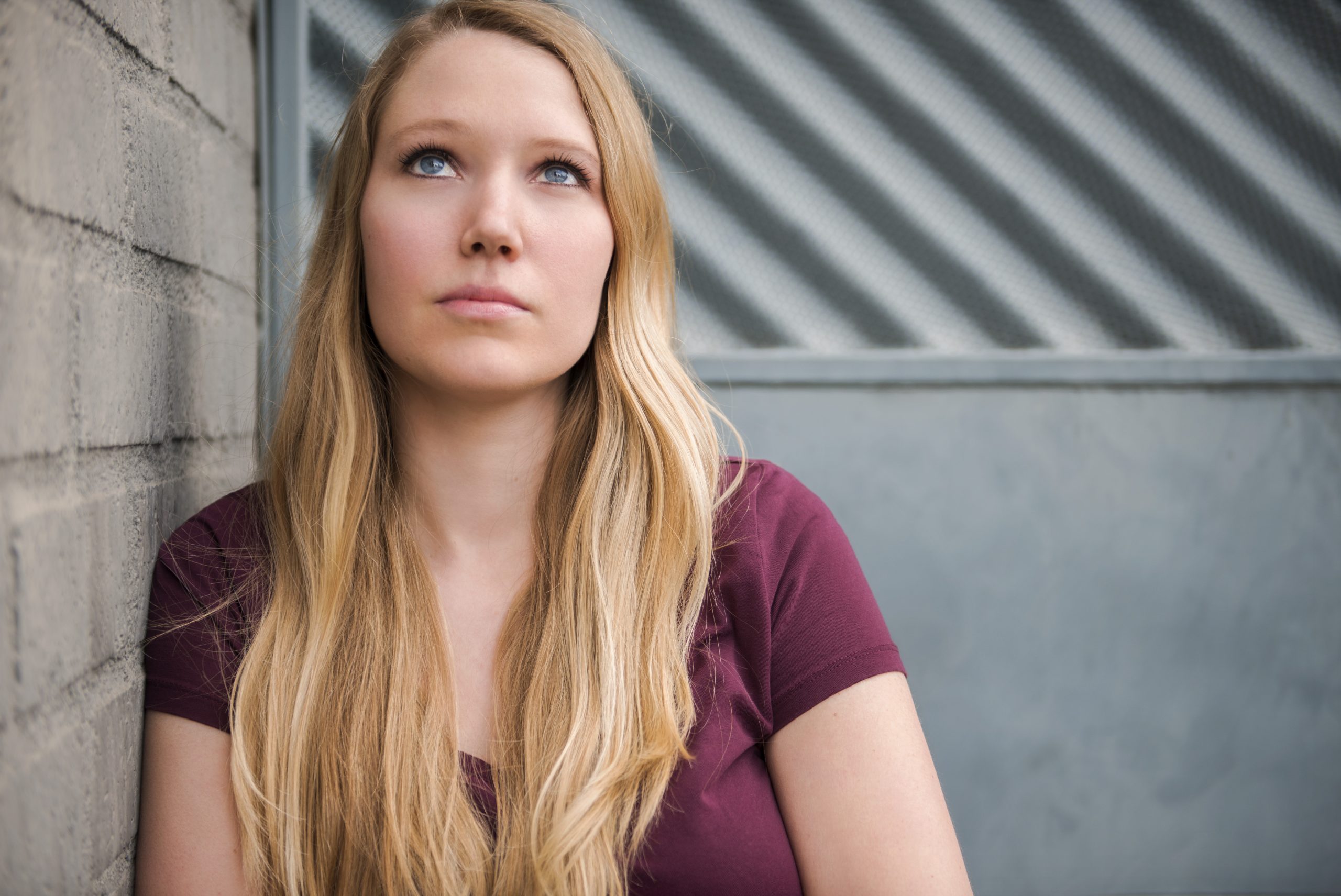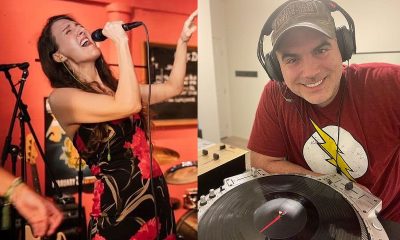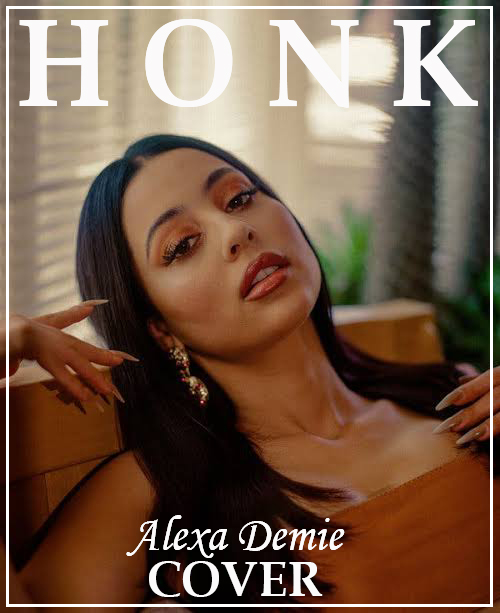Interview
Meet Mandi Kitchen, a Multifaceted Music Producer and Sync Songwriter

In the ever-evolving world of music production and sync songwriting, Mandi Kitchen has made a name for herself with her exceptional talent, dedication, and passion for music. A prestigious Berklee College of Music graduate, Mandi has been playing, writing, producing, and selling music professionally since 2012. With an extensive background in various genres and a deep love for songwriting and film, Mandi has collaborated with numerous artists, producers, and directors to create musical masterpieces for various projects. In this exclusive interview, Mandi opens up about her creative process, the challenges she’s faced in her career, and her thoughts on the future of sync songwriting and music production.
Can you tell us about your background and how you got into music production?
Mandi Kitchen: I started writing music right around the time I started playing music- which, if you ask my Mom was 4 years old. I would play on the top part of the piano when she was practicing, and it would surprise her that it actually sounded good. I’ve been playing, writing, producing, and selling music professionally ever since I graduated from Berklee in 2012.
What inspired you to pursue a career in sync songwriting?
Mandi Kitchen: I am passionate about both songwriting and film. I love both mediums of artistic expression, and when the two work in sync (literally) with each other, it’s magic. I also love the writing process of making music vs. performing and sync is a medium where the song performance happens to be the song recording, which is a perfect fit for me.
Can you walk us through your creative process when composing music for a specific project?
Mandi Kitchen: Normally, I start with harmony, as that gives me an emotional basis for the specific style we’re working with. Melodies come after, and then lyrics. Though I will say there are times when a specific lyric and melody hit at the same time, as if it were that the two together were always meant to go together.
How do you approach collaborating with directors, producers, and other members of a production team?
Mandi Kitchen: Letting people express their vision is important in this industry, whether they are a director, producers, or fellow songwriters. We are all artists of some kind, so remembering that everyone needs their vision considered and heard, regardless of what role they play at the time, is critical. Being willing to give and take on certain things while never compromising on the quality of the production or the integrity of the song is the most important thing you can do with another collaborator or producer. I strive to stay flexible while also making sure my collaborations and I will yield the highest quality possible. Keeping up relationships over time (and I mean years of time!) is also a key element of success in this industry.
Can you give us an example of a particularly challenging project you worked on and how you overcame any obstacles during the process?
Mandi Kitchen: Yes! There are so many to choose from, lol. But recently, I was working on a co-write last winter, and the producer and I realized that our co-writer was going to be very rigid and request many last-minute changes to the track. It was hard and costly to accommodate the changes as the producer had a lot of other projects on the table, and we didn’t always have the time or desire to adjust to the demands. This led to having to re-book studio time, re-writing entire sections of the already written song, and inevitably became a lot pricier than I had hoped the project would end up landing. Instead of giving up on the project, I decided it would be better for everyone if I were okay with forking over a bit more money for the song in the name of getting it done and having the song produced as requested. It was a good learning experience to number one, learn about this person’s workflow, and take note for any similar future situations, and number two, realize that the extra bit of cash was less important than finishing the project we had spent countless hours of time on to everyone’s satisfaction. It’s my philosophy always to finish the song and leave everyone who worked on it satisfied with the end result.
How do you stay up to date with industry trends and technology advancements in music production?
Mandi Kitchen: Honestly, it’s partially thru listening to new releases coming out, keeping your ear to the ground listening to what’s being played in film/t.v. and commercials, and partially having a network to discuss new technology, how technology is influencing the industry and which sounds are coming to the forefront at any given time.
Can you discuss any notable projects you have worked on and what you learned from those experiences?
Mandi Kitchen: During covid time, I had the amazing opportunity to write on the Czech band “Vesna”’s new album – (check them out they’re a contestant on Eurovision this year!) We wrote a song titled “Blizenci.” The experience was super fun but also challenging as the lyrics had to be in Czech, and the lyrics were already written, so we had to write the music to match the vibe and messaging of the lyric. The other challenging aspect is that pop Czech lyrics are much more poetic and deeply written than current pop trends in the U.S., so feeling like we did them justice with the music we wrote with them was our goal, and I feel we succeeded. I would send melodic and harmonic ideas back and forth via WhatsApp or Facebook Messenger with the lead singer of the band, and over time we eventually landed on the hooks we loved. The track turned out incredible and has such an upbeat and inspiring feeling. I hope everyone who reads this will go listen to it!
How do you balance artistic expression with meeting the needs and vision of the client or production team?
Mandi Kitchen: I love writing in a lot of different genres because it challenges my creativity and skill set. With this in mind, writing music for sync is awesome because there are many occasions when you get to choose individual briefs to write to, so many different styles can come into play. But where the emotional expression tends to come out for me is usually thru the lyrical content and harmonies chosen in each song.
Can you share with us your favorite piece of music that you have created and what it means to you?
Mandi Kitchen: It’s interesting, but usually, whatever I’m working on at the moment tends to be my favorite. My first single, “Chrysalis,” in the mixing stages of production right now, is a really powerful piece for me. It’s powerful because it started as a piano solo. The way I started my professional career was as a pianist, and then with the help of the amazing GZN Music, we added electronic production to it, and the vocals and lyrics came last, the finishing touch on a very powerful piece. To me, “Chrysalis” represents what a caterpillar has to go through to become a butterfly. Having to bide your time, work on yourself, develop your colors, and wait and work more until you indeed are able to fly. To me, it feels a lot less like a traditional song and more like an art piece or composition.
What do you see as the future of sync songwriting and music production in the industry?
Mandi Kitchen: I think we’re getting to it now. Everyone who wants to can have a shot at working in sync. As long as their sound is at a standard of professionalism, they can customize and be flexible to the client’s needs. Also, AI and technology of sifting thru metadata/moods/genres of tracks is now starting to play a bigger and bigger role, and I’m sure will play more as we go. The one thing artists should do if they want to outperform is increase their versatility and abilities. Yes, I write pop music for sync, but I also orchestrate and notate parts for orchestras, can build choir parts and scores, and sell those for people to perform. Along with writing music, I teach composition and perform locally in the community. it’s giving the world value in a bigger and more creative way that is going to carry a sync or any artist to the top.
Interview
Nene Leakes Left Wide-Eyed By Chrisean Rock’s 12-Kid Reveal

Reality icon Nene Leakes is no stranger to jaw-dropping interviews, but even she had to pause when Chrisean Rock dropped a bombshell on her latest appearance. As a guest on Nene’s talk show, the viral rapper and internet sensation opened up about her complicated relationship with Blueface, motherhood, and a surprise personal decision that had fans and Nene herself doing a double take. In a heart-to-heart moment, Nene delicately inquired about the infamous Blueface tattoo prominently inked on Rock’s cheek.
“Why you put him on your face because you have a beautiful face?” Nene asked, with the sass and sincerity only she can deliver. “Now, Chrisean… would you ever take it off?” Without hesitation, Chrisean confirmed what many fans didn’t see coming. “I’m do it on my stream,” she said confidently. “I want my fans to be a part of the process.” But just when the conversation seemed like it couldn’t get any more personal, Rock took it to another level by revealing she hopes to have twelve children in the future.
The confession left Nene and likely anyone watching with raised eyebrows and a host of follow-up questions. While Rock didn’t dive into the timeline or logistics, her conviction was clear. In an age where celebrities often filter their truths, Chrisean’s candidness struck a chord, if not a nerve. Nene, ever the seasoned host, managed to keep her cool, delivering her signature blend of shocked expression and knowing nod. “Twelve? Girl, you better get to work!”
Chrisean’s willingness to share her journey, including the removal of a very public symbol of her past and her dreams of a big family, gives a new dimension to the often misunderstood star. Whether or not the world is ready for Rock and her future football team-sized family, she’s doing things on her own terms. As for Nene, she may just need a moment to recover before the next guest walks in with a story to top this one.
Interview
Keke Opens Up On Why Her Jonathan Majors Interview Never Aired

Keke Palmer has always been open about her feelings, and this week was no exception as she talked about a canceled podcast episode featuring actor Jonathan Majors, who is currently facing legal challenges. Back in April, fans noticed a preview for what seemed to be an exciting and possibly controversial episode of her podcast, “Baby, This Is Keke Palmer.” The Wondry app described it with the phrase “Accountability. It’s a loaded word, right?” The episode was set to explore how society is changing its views on forgiveness, justice, and what it means to hold people, especially men, accountable for their actions.
Naturally, fans became curious when the episode didn’t air as planned. They wondered if it was canceled because of Majors’ legal issues or if Keke decided not to release it on her own. During a recent interview on “Way Up With Angela Yee,” Keke finally shared her thoughts. She explained that some of the decisions may have been beyond her control, but she spoke about it in a calm and respectful way. She didn’t blame anyone or go for shock value but hinted that there were bigger issues influencing the situation.
You can also read this: Keke Palmer Stands by Baby Daddy Darius Jackson’s New Path to Redemption in the Army
Keke’s honesty adds depth to ongoing discussions about celebrity culture, responsibility, and how media decisions are made. By choosing not to give too many details, she showed her maturity and professionalism, qualities her fans truly appreciate. This situation reminds creators of the careful balance they must maintain when discussing sensitive subjects. Keke, known for her honesty and charm, is willing to tackle tough conversations but understands when it’s best to hold back.
Whether or not the episode with Jonathan Majors will ever be released is still uncertain. However, Keke Palmer is not afraid to engage with difficult topics, she simply knows when to speak up and when to step back. In today’s world, where silence can often be misinterpreted as agreement, Keke demonstrates that sometimes, choosing to stay quiet is also a way of being accountable.
-

 Artist Spotlight4 days ago
Artist Spotlight4 days agoHope Easton channels tropical mischief and charm in new single “SexyReady”
-

 Artist Spotlight4 days ago
Artist Spotlight4 days agoSweetCandy! declares self-love and defiance on “UGLY”
-

 Artist Spotlight4 days ago
Artist Spotlight4 days agoBluntBrad Jr. finds calm ambition in the laid-back shine of “It’s All Good”
-

 Artist Spotlight4 days ago
Artist Spotlight4 days agoLavien drops a heartfelt Afrofusion plea that sticks to the soul with “Nobody”
-

 Artist Spotlight3 days ago
Artist Spotlight3 days agoLana Crow turns challenges into a celebration with “Laugh With You”
-

 Artist Spotlight5 days ago
Artist Spotlight5 days agoCircleKSK ignites an anime-metal collision on “UnBreakable Turn” ft. Anya J
-

 Artist Spotlight5 days ago
Artist Spotlight5 days agoRecc explores nostalgia and inner freedom in “Where the Wild thYngs Are”
-

 Artist Spotlight5 days ago
Artist Spotlight5 days agoAnnaBelle Swift delivers gentle hope and gratitude with new single “Heaven Sent”













